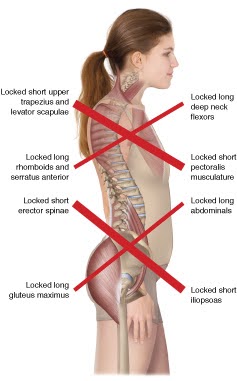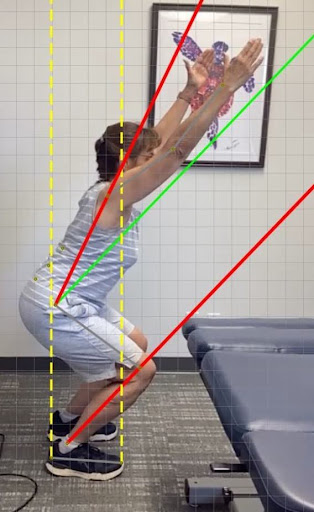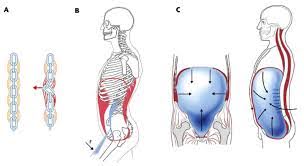We are built to move. For more than 250,000 years, human bodies were in constant motion: walking, running, crouching, jumping, climbing, and squatting, all throughout the day. In the last 100 years, our lifestyles have changed drastically—though our bodies have not. For many people, the result of the modern lifestyle is chronic disease and injury.
If you move your body—and of course you do!—you need to train it to move properly. How does healthy movement look and feel?
The first step is understanding how the human body works. Whether you’re recovering from a low back pain, managing a chronic disorder, or training for a 100-mile ultra, the principle is the same: building a strong foundation, based on core stability, intra abdominal pressure, and a symphony of fundamental movements, is essential to good physical health. (Providing our muscles with the proper fuel is also vital—in my next newsletter, I’ll share more about this, including monitoring your blood sugar levels throughout the day.)

The Movement Pyramid, which I describe in detail below, illustrates physical health through a progressive and integrated approach that blends strength, flexibility, coordination, and skill-specific training.
The Science Behind the Pyramid
The Movement Pyramid is built on the understanding that the human body is made up of complex and interrelated systems of bones, joints, nerves, and muscles, designed to perform very specific movements. Every system in the body needs to work in tandem to recover from injury, prevent injury, and optimize performance.
Let’s take squatting, a fundamental movement. For thousands of years, humans spent far more time in a squatting position — hunting, gathering food, socializing, and so on. Now, most of us only squat to reach the bottom drawer of the refrigerator and when lowering ourselves onto a chair or the toilet. Yet squatting acts as an excellent way to strengthen our legs, glutes, and core muscles, when repeated hundreds of times a day. Don’t despair, though: There are ways to achieve the strength and stability with much more targeted exercises.
In a proper squat—illustrated by the green line in the accompanying diagram—the knees are bent and the back is parallel to the shins. Here the squatter is too upright, causing over 200% more load on her low back than it is designed to handle. The strain is repeated every time she squats to sit on the toilet, sit in a chair, or get into her car throughout the day.

When the hip flexor, glutes, and abdominal muscles are weak, the hip flexors tighten up in compensation, increasing pressure on the lower back. The pressure is often compounded by prolonged sitting and inactivity, straining the hip, pelvic floor, foot, and adductor muscles further. The result contributes to chronic back pain—the number one reason people visit the doctor.
When we squat improperly and infrequently, the hip flexor, glutes, and abdominal muscles are weakened. The hip flexors tighten up in compensation, increasing pressure on the lower back. The pressure is often compounded by prolonged sitting and inactivity, straining the hip, pelvic floor, foot, and adductor muscles further. The result contributes to chronic back pain—the number one reason people visit the doctor.
This is where the Movement Pyramid comes in. Learning to understand the body’s design and master fundamental movements leads to less strain and better physical health overall.

Three-Fold Recovery: Release, Remobilize, Restore
Many people don’t realize their bodies are overcompensating or suffering from strain until they get injured. Yet healing injuries requires the same systemic understanding of the human body. At the clinic, we take a holistic three-fold approach to chronic pain and injury.
• Release tight, dysfunctional muscles
• Remobilize immobilized tissues
• Restore proper motion and function
In releasing and remobilizing tissues, we are addressing the underlying causes of pain or injury. When we are restoring function, the key is building a progressive program that blends strength, flexibility, coordination, and skill-specific training.
Let’s return to lower back pain, for example. We all know the first step to recovering from back pain isn’t running a marathon. We restore movement by fortifying the systems that will help protect against reinjury—in this case, the hip flexors, hamstrings, abdominals, and glutes (particularly the medius!).
Moving to highly skilled activities without a proper base leads to dysfunctional movement, overcompensation, and injury—not to mention, greatly reduced performance. Building up to complex movement is crucial in avoiding injury and in achieving full recovery after an injury.
Let’s take a closer look.

The Base: Fundamental Movements
Core stability in the feet, pelvis, and spine is the foundation of the movement pyramid. Traditional exercise and weight training programs often focus on building mass in the major muscles quickly; most of these muscles, however, are anchored to the spine or pelvis, which need to be stabilized first.
Think about how your body feels when walking on soft sand at the beach versus walking on a paved sidewalk. Walking on an unstable surface makes all our movements more arduous and less efficient, tiring our bodies more rapidly and exposing us to injury. The same principle applies to a weak or unstable core in the body.
At this level of the pyramid, we are thinking about the quality of our movements in the following areas.
• Core stability: It is essential to build a rock-solid foundation in the feet, pelvis, and spine to anchor your muscles and provide the foundation for more complex movements.
• Intra abdominal pressure: Coordinated movement of the diaphragm and spinal, abdominal, and pelvic floor muscles. This is most effectively achieved through belly breathing.
• Mobility, rotation, and flexibility: Adequate range of motion in the joints and flexibility in the muscles are essential for performing basic and advanced movements effectively.
 Let’s think about how we can put these ideas into practice in one of the most fundamental human positions: standing. In a healthy standing posture, the knees should be over the ankles, the hips over knees, the shoulders over hips, and the ears over shoulders—as illustrated by the green line in the photo. Stacked up properly, the joints bear the bulk of the work, which they are designed to do, while the muscles can relax.
Let’s think about how we can put these ideas into practice in one of the most fundamental human positions: standing. In a healthy standing posture, the knees should be over the ankles, the hips over knees, the shoulders over hips, and the ears over shoulders—as illustrated by the green line in the photo. Stacked up properly, the joints bear the bulk of the work, which they are designed to do, while the muscles can relax.
Most people in the United States have a posture that resembles the red line in this diagram, weaving back and forth across the body. Building your core, with the strength to support a proper posture, creates a strong base for all your daily movements.
Strength, that is balanced between the muscle groups that flex and extend the joints, will put the body in the correct position. This thing allows proper joint movement, which is the base of the pyramid.
The Middle: Integrated Movement Patterns
Building on basic movements in the first tier, the second step is incorporating more complex patterns that combine multiple basic movements, such as jumping, running, and climbing.
At this level of the pyramid we are considering:
• Strength and Conditioning: Developing strength through resistance training and endurance exercises is crucial for executing advanced movements efficiently and safely.
• Coordination and Agility: Skills such as hand-eye coordination, footwork, and reaction time allow for more refined and dynamic movements.
This stage is where joint motions occur simultaneously. A good example is squatting down to take something out of a drawer or put a box on the shelf. These are the general activities of daily living that, when done properly, prevent arthritis and injury, while maintaining pain-free motion.
The Top: Life, Endurance, and Performance
Now it’s time to think about your goals. What do you want to achieve and what skills do you need for your healthy day-to-day functioning? The top level of the movement pyramid builds on the lower two tiers, focusing on strength and coordination required to perform specific or highly skilled physical activities.
• Your Life-Specific Skills: Take a moment to consider the variety of movements your body performs every single day. What do you need to do to perform life tasks without pain or injury? These are the skills you’re building in the top tier.
• Performance Optimization: What do you want to achieve on the courts, on the playing field, or on the slopes? For athletes, the final step in the pyramid is improving overall performance through techniques, strategies, and mental conditioning. It involves refining technique, increasing speed and power, and optimizing efficiency.
The Movement Pyramid Is The Key To Maximimizing Function and Minimizing Injury Risk
One thing I love about the pyramid approach to physical health is that we can all make a great deal of progress on our own, without professional intervention. In fact, simple well-chosen exercises, consistently repeated, can have a noticeable positive impact on our health and performance. And every single person, no matter what their current physical conditioning and goals, can benefit by a more holistic understanding of physical fitness, as seen through the lens of this progressive and integrated model.
At the Muscle & Joint Clinic, we work with you to build a holistic pyramid-based treatment program by identifying the areas where you need to build foundational skills and mapping out a plan to build core capabilities and specific skills.
Look to our Instagram and website for more details. I hope we’ll see you here soon!
In health,
Dr. Derik
P.S. Cold and flu season is upon us. My tip for staying healthy this season? Think about your gut. 70% of our immune system is based in our gut! The gut is massive—spread out, it would reach the size of a tennis court—and its healthy functioning is central to maintaining the immune system in top condition. To keep your gut happy and your body healthy, try adding more fermented foods to your diet this fall. Packed with probiotics, naturally fermented foods fortify your digestive system—and your whole body, keeping colds and flus at bay.
P.P.S. Cold immersion therapy has been shown to reduce getting sick by 30%. Keep on gettin’ into that cold tub!
